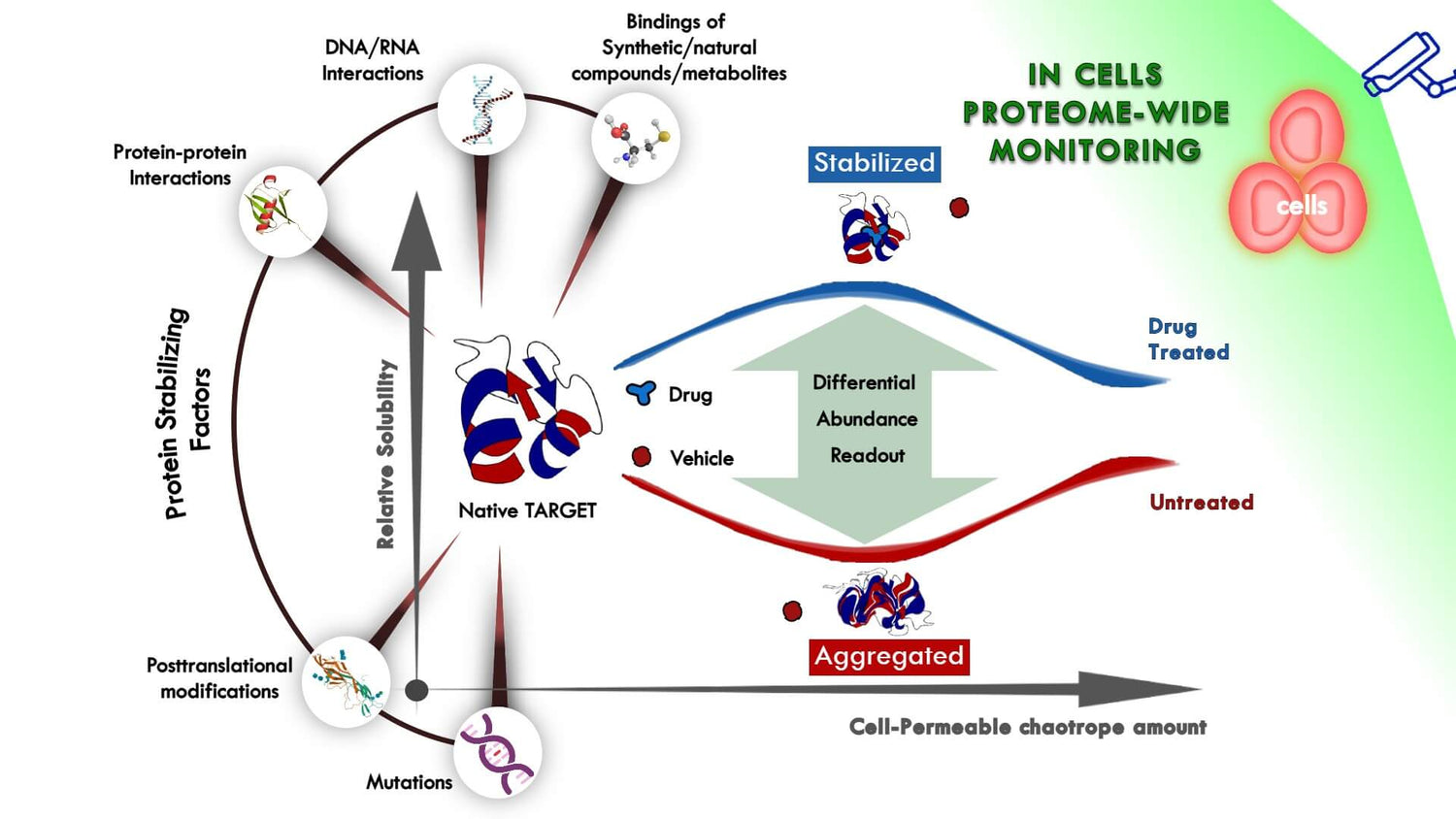Principles of UCeP Technology
Target deconvolution/ engagement approaches that require affinity capture or in situ heating may change or destruct the physiological conditions of cells irreversibly resulting in targets misidentification or high false discovery rate. These problems had inspired a team of talented scientists to invent a ground-breaking solution - UCeP technology.
UCeP technology is a biophysical assay that can perform on living cells as well as run at physiological temperature without prior cell genetic manipulation or probe modification required. The key concept underlies UCeP technology is illustrated in the diagram below. Diverse of biomolecules like DNA, proteins, compounds, metabolites, and natural products can interact and bind to their target proteins in cells. These diverse interactions as well as target protein modifications (mutations and post-translational modifications) will induce the stability changes of the target proteins. The UCeP technology can capture and visualize these subtle stability changes via physical means.
For instance, proteins in the living cells are first to be treated with compound of interest and vehicle separately. The proteins in living cells are subsequently perturbed and undergo abrupt aggregation. Upon these steps, drug bound proteins in the UCeP samples is structurally stable and tend to be more soluble than unbound state. Both aggregated and stabilized form can be easily separated by simple physical separation means like centrifugation. Targets are therefore identified through measuring the abundance differences of stabilized proteins between drug treated and untreated samples.
Furthermore, native sample buffer used in the UCeP assay has made the UCeP samples compatible to wide variety of downstream signal detection systems includes mass spectrometry, western blot, ELISA, microarray, luminescene and fluorescent plate reading. You can simply channel your UCeP samples to any of those signal detection methods for your specific study objectives and research preferences.
UCeP technology highlights:
- Performed using living cells
- Assay incubated/ run at physiological temperature
- Native sample buffer system used in the assay, that is friendly to varying readout detection system
- Cell permeable denaturant is used to perturb host cells for minutes only
- Takes only 30 minutes to 2 hours to complete (vary on cell treatment time)
Learn more about how we apply the UCeP technology in target deconvolution and target engagement assay.



